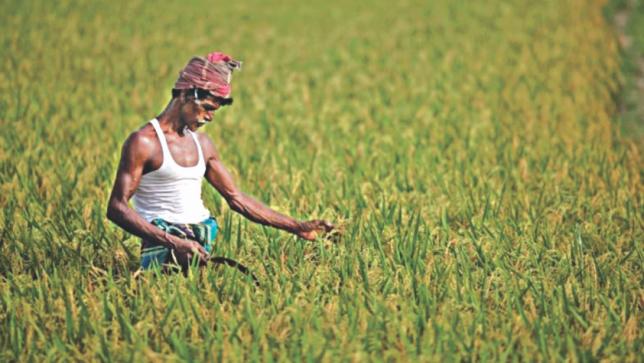Rice yield to go up

The US Department of Agriculture (USDA) has revised its forecast on Bangladesh's rice production in the May-April period of 2018-19, saying it would increase to 34.5 million tonnes owing to increased plantation of summer rice during the aus season.
Total annual production may rise 5.78 percent year-on-year from the 32.65 million tonnes of 2017-18, said the USDA Foreign Agricultural Service in its latest issue of Grain and Feed Update on Bangladesh released last week.
The report, citing official data, said rice cultivation area and production estimates in the aus season have been revised up to 1.1 million hectares of land and 2.4 million tonnes respectively.
The Department of Agricultural Extension (DAE) estimates that farmers grew rice on 1.15 million hectares of land this year, the highest since fiscal 2016-17.
“The main reason behind the increase in plantation area is the favourable prices of rice. We have seen that an inbred variety, BRRI Dhan-48, has become popular among growers,” said a senior DAE official.
“Besides the government has also been giving incentives to growers to encourage rice cultivation in aus season,” added the official.
Sown in March-April and harvested in July-August periods, rice of the aus season lags behind in terms of yield in the three rice crop seasons, including aman and irrigated boro, the principal crop.
The DAE official expects that production in aus season would rise this year compared to the previous year. The production estimate is yet to be finalised by the Bangladesh Bureau of Statistics.
The USDA has also raised its aman rice cultivation and production forecast for the current season in context to the previous season. Overall aman output may rise 6 percent to 13.20 million tonnes on assuming optimal growth and normal yield, it said.
The DAE estimates that farmers cultivated aman paddy on 5.8 million hectares of land this season. Growers have already started harvesting varieties of paddy which ripen early.
The US agency said the previous year's production shortfall forced farmers to recover their losses through expansion of cultivation areas in the three rice-producing seasons this year.
“Nevertheless, the monsoon season this year is not sufficiently helping farmers to realise good planting progress through the end of September,” said the report.
It said transplantation of aman rice was complete by mid-September and the plants were in the reproductive phase, progressing with the support of supplementary irrigation to manage water stress.
“This year's abnormal monsoon season with lower levels of precipitation is forcing farmers to use supplementary irrigation to stabilise the vegetative and reproductive growth of planted aman rice,” said the report.
“The changing weather conditions are gradually going to redefine aman rice from rain-fed to a semi-irrigated crop,” it added.
The USDA, however, said irrigation for aman rice cultivation would not increase production as it gives lower yield than rice in the boro season. It will increase cost, thereby motivating farmers to move away from aman cultivation.
The US agency forecasted that Bangladesh would import 0.8 million tonnes of rice in July-June period of fiscal 2018-19.
Bangladesh had been a major rice buyer in 2017-18, importing 3.89 million tonnes, the highest in the last three decades, after repeated floods washed away huge amounts of crops.
